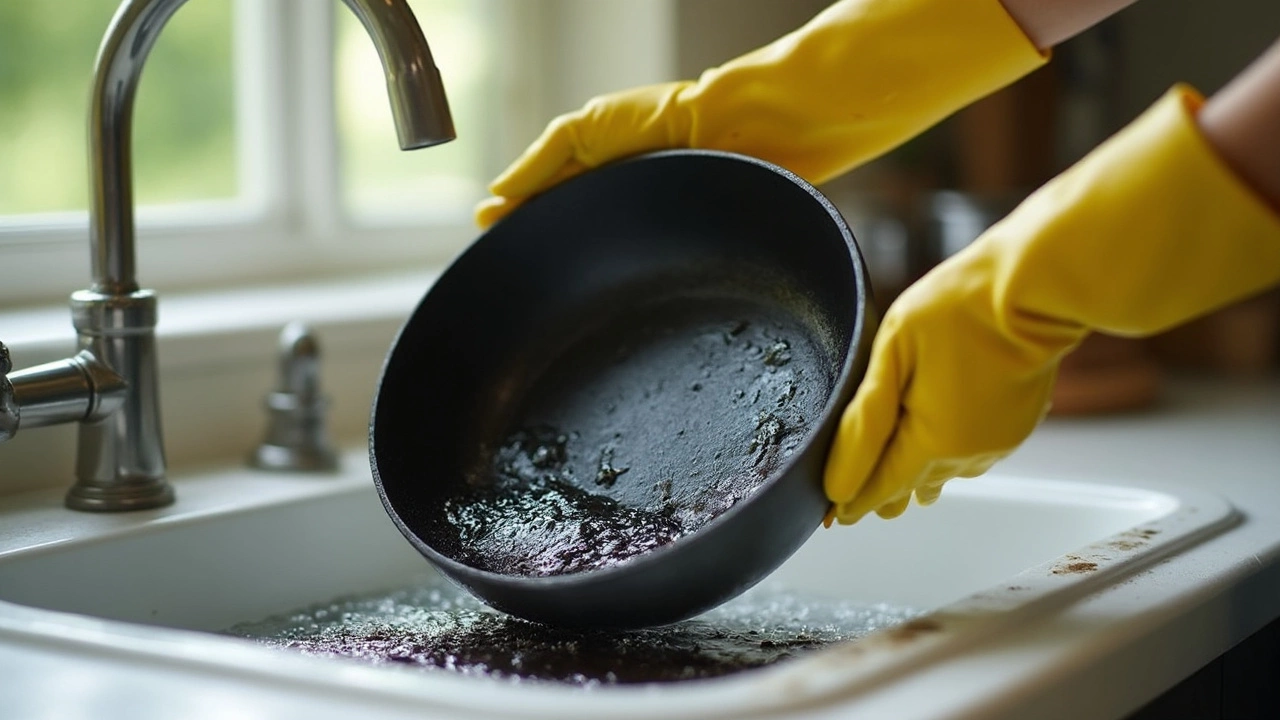Black Stuff on Pans: Why It Happens & How to Fix It
Ever opened a pan and found a mysterious black layer? You’re not alone. Most home cooks notice it after a few weeks of cooking, and it can be frustrating. The good news? It’s usually harmless and easy to deal with. Below we break down the why, the how, and the prevention tricks you can start using today.
What Causes Black Residue?
Black spots aren’t magic; they’re the result of a few common kitchen habits. First, high heat can carbonise oil or food bits, leaving a dark film on the surface. Second, metal pans (especially stainless steel or cast iron) develop a patina when they’re not seasoned properly. Third, leftover cooking sprays or aerosol oils can polymerise and stick, turning brown‑black after repeated heating.
If you use non‑stick pans, the story changes a bit. Old non‑stick coatings can break down over time, especially if you cook on very high heat. That breakdown shows up as a blackish ring or speckles. While it looks unsightly, it usually doesn’t affect performance until the coating starts flaking.
Cleaning Tips & Prevention
Start with a gentle approach. Fill the pan with warm water, add a splash of dish soap, and let it soak for 10‑15 minutes. The softened residue will lift with a soft sponge or non‑abrasive scrub pad. For tougher carbon, sprinkle baking soda over the damp surface, let it fizz, then scrub gently.
If you prefer a natural cleanser, mix equal parts vinegar and water, heat it briefly, and wipe with a cloth. The acid helps dissolve the black film without scratching. For cast‑iron or stainless steel, a thin layer of oil after cleaning protects the metal and prevents future discoloration.
Prevention is half the battle. Use medium heat whenever possible; high heat is the main culprit for burning oil. Keep your pans well‑seasoned: a light coat of oil after each wash creates a barrier. Avoid aerosol cooking sprays—opt for a small amount of oil poured directly into the pan.
When it comes to non‑stick pans, follow the manufacturer’s temperature guidelines. Most non‑stick surfaces are safe up to 350°F (175°C). If you notice the coating darkening, it may be time for a replacement to avoid any health concerns.
Finally, store your pans properly. Stack them with a protective layer (like a cloth or pan protector) to stop scratches that can trap food particles and turn black.
With these steps, the mysterious black stuff will be a thing of the past. Your pans stay cleaner, work better, and look great for years to come.

Black Stuff on Pan Bottoms: What It Is and How to Deal With It
Ever turn over a pan and find a stubborn black layer clinging to the bottom? This isn't just burnt food—it's a mix of carbonized grease, oils, and sometimes even chemical reactions from cooking. That black stuff can mess with your food flavor and even shorten the life of your cookware if ignored. This article breaks down what causes it, how it builds up, and most importantly, how to get rid of it. Say goodbye to scrubbing frustration and hello to pans that last longer.
Categories
- Storage (27)
- Bathroom (18)
- Sofas (15)
- Curtains (15)
- Home Decor (12)
- Bedding (11)
- Kitchenware (11)
- Cushions (11)
- Mirrors (10)
- Rugs (9)
Popular Articles

How to Spot a High-Quality Sofa
Mar, 24 2025


